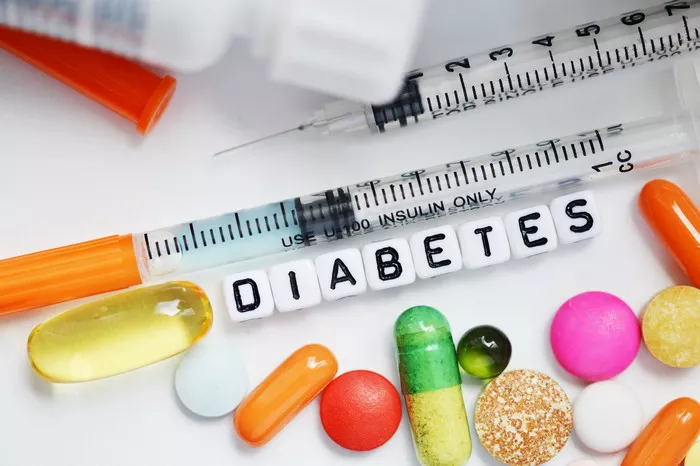Type 2 diabetes (T2D) is a multifactorial metabolic disorder characterized by insulin resistance, impaired insulin secretion, and dysregulated glucose metabolism. While the etiology of T2D is complex and involves a combination of genetic, environmental, and lifestyle factors, the cellular mechanisms underlying the development and progression of the disease play a pivotal role. In this comprehensive exploration, we delve into the intricate cellular pathways and molecular processes that contribute to the onset and progression of T2D.
Understanding Insulin Resistance: The Key Feature of Type 2 Diabetes
Insulin resistance lies at the heart of T2D pathophysiology, representing a diminished response of target tissues, such as skeletal muscle, liver, and adipose tissue, to the actions of insulin. Under normal conditions, insulin binds to its receptor on target cells, initiating a cascade of intracellular signaling events that promote glucose uptake, glycogen synthesis, and lipogenesis. However, in insulin-resistant states, these signaling pathways become dysregulated, leading to impaired glucose uptake and increased hepatic glucose production.
Cellular Mechanisms of Insulin Resistance
1. Inflammatory Signaling: Chronic low-grade inflammation has been implicated in the pathogenesis of insulin resistance. Pro-inflammatory cytokines, such as tumor necrosis factor-alpha (TNF-α) and interleukin-6 (IL-6), activate intracellular signaling pathways, such as the JNK and IKK-β/NF-κB pathways, which interfere with insulin signaling and promote insulin resistance. Additionally, activation of toll-like receptors (TLRs) by microbial products or endogenous ligands can trigger inflammatory responses that impair insulin action.
2. Lipid Accumulation and Lipotoxicity: Excessive accumulation of lipids, particularly in non-adipose tissues such as skeletal muscle and liver, has been implicated in the development of insulin resistance. Lipid intermediates, such as diacylglycerols (DAGs) and ceramides, disrupt insulin signaling pathways, leading to impaired glucose uptake and mitochondrial dysfunction. Lipotoxicity, characterized by lipid-induced cellular dysfunction and apoptosis, further exacerbates insulin resistance and contributes to beta-cell failure in T2D.
3. Mitochondrial Dysfunction: Mitochondria play a central role in cellular energy metabolism and insulin sensitivity. Impaired mitochondrial function, characterized by decreased oxidative capacity, increased reactive oxygen species (ROS) production, and altered mitochondrial dynamics, has been implicated in the pathogenesis of insulin resistance. Mitochondrial dysfunction leads to impaired ATP production, oxidative stress, and activation of stress-responsive kinases, which disrupt insulin signaling pathways and promote insulin resistance.
4. Endoplasmic Reticulum Stress: The endoplasmic reticulum (ER) serves as a critical site for protein folding, lipid biosynthesis, and calcium homeostasis. Disruption of ER homeostasis, caused by nutrient overload, oxidative stress, or genetic factors, leads to the accumulation of misfolded proteins and activation of the unfolded protein response (UPR). Chronic ER stress impairs insulin signaling pathways, promotes inflammation, and contributes to insulin resistance in T2D.
Impaired Insulin Secretion and Beta-Cell Dysfunction
In addition to insulin resistance, impaired insulin secretion and beta-cell dysfunction contribute to the pathophysiology of T2D. Beta cells, located in the pancreatic islets of Langerhans, are responsible for synthesizing and secreting insulin in response to elevated blood glucose levels. However, in individuals with T2D, beta-cell function becomes progressively impaired due to a combination of genetic, environmental, and metabolic factors.
Cellular Mechanisms of Beta-Cell Dysfunction
1. Glucotoxicity: Prolonged exposure to elevated blood glucose levels, known as glucotoxicity, can impair beta-cell function and promote apoptosis. Glucose toxicity disrupts mitochondrial function, increases oxidative stress, and activates stress-responsive kinases, leading to beta-cell dysfunction and decreased insulin secretion.
2. Amyloid Deposition: Islet amyloid deposition, characterized by the accumulation of misfolded amylin (or islet amyloid polypeptide) within pancreatic islets, is a common feature of T2D. Amyloid fibrils impair beta-cell function, disrupt insulin secretion, and promote apoptosis, contributing to progressive beta-cell loss and impaired glucose homeostasis.
3. Incretin Dysfunction: Incretins, such as glucagon-like peptide-1 (GLP-1) and glucose-dependent insulinotropic polypeptide (GIP), play a crucial role in regulating insulin secretion and glucose metabolism. In individuals with T2D, impaired incretin secretion or signaling leads to diminished beta-cell responsiveness to incretin stimuli, contributing to impaired insulin secretion and hyperglycemia.
4. Oxidative Stress and Inflammation: Oxidative stress and inflammation contribute to beta-cell dysfunction through multiple mechanisms, including mitochondrial dysfunction, endoplasmic reticulum stress, and activation of pro-inflammatory signaling pathways. Chronic exposure to oxidative stress and inflammatory mediators impairs beta-cell function, promotes apoptosis, and contributes to progressive beta-cell loss in T2D.
Genetic and Environmental Factors
While cellular mechanisms play a central role in the pathogenesis of T2D, genetic and environmental factors also contribute to disease susceptibility and progression. Genome-wide association studies (GWAS) have identified numerous genetic variants associated with T2D risk, many of which are involved in beta-cell function, insulin signaling, and glucose metabolism. Additionally, environmental factors such as diet, physical activity, and exposure to toxins or pollutants can modulate gene expression, alter cellular function, and influence T2D risk.
Conclusion
Type 2 diabetes is a complex and heterogeneous disease characterized by insulin resistance, impaired insulin secretion, and dysregulated glucose metabolism. At the cellular level, insulin resistance arises from a combination of inflammatory signaling, lipid accumulation, mitochondrial dysfunction, and endoplasmic reticulum stress, while beta-cell dysfunction results from glucotoxicity, amyloid deposition, incretin dysfunction, and oxidative stress. Understanding the intricate cellular mechanisms underlying T2D pathophysiology is essential for developing targeted therapeutic strategies and interventions aimed at preventing and treating this prevalent metabolic disorder. By unraveling the underlying causes of T2D at the cellular level, we can pave the way for more effective approaches to disease management and ultimately improve the health outcomes of individuals affected by this chronic condition.



























